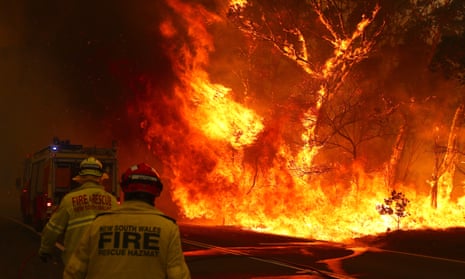Sydney’s drinking water is unlikely to remain healthy unless the effects of the climate crisis are mitigated, according to a report handed to the New South Wales government.
After a three-year audit, the scathing assessment of the city’s water supply also found seven of the 18 key indicators for the water system’s health were worsening.
The audit found climate change posed a risk to the city’s main water catchment providing adequate, good quality water to the greater Sydney area in the future.
Undertaken by Eco Logical Australia and Restore Environmental Consultants for the water minister, Rose Jackson, the audit looked at the health of the catchment between 2019 and 2022.
It found climate change was the “greatest driver of the overall health of the catchment”, noting the severe impact of events including the black summer bushfires, which burned about a third of the catchment area.
The catchment, which takes in several major river systems including the Hawkesbury-Nepean, covers more than 160,000 sq kms and collects and stores drinking water for Sydney and the surrounding regions.
“It is unlikely that good land management practices and pollution regulation will maintain catchment health in future unless substantial effort is also made to reduce greenhouse gas emissions and limit climate change impacts,” the report read.
The audit found the catchment’s macroinvertebrate communities were in decline due in part to habitat degradation and deteriorating wetlands. “Further decline is likely due to climate change and increasing bushfires, especially in wetlands already under stress from impacts such as longwall mining or urban development,” the audit found.
The report concluded two of three indicators of water quality – raw water quality and nutrient concentrations – were worsening in many waterways.
Auditors found ash and debris from the 2019 and 2020 fires had affected water quality and the ecology of many parts of the landscape.
The periods of heavy rain that followed the fires assisted vegetation recovery but also triggered soil erosion and landslips, the report says. There was an “increased likelihood of compounding effects of extreme rainfall following significant fire seasons due to climate change”, the report concluded.
“Climate change is predicted to drive more frequent and extreme natural disasters in coming years.
“This will threaten the resilience or capacity of the catchment to maintain essential ecosystem services such as the provision of adequate, good quality source water.”
The audit recommended the NSW government review its climate change mitigation policies and said more data collection was needed, as modelling indicates extreme weather will become more frequent.
“Adverse impacts from climate-driven events are already observable in the catchment, although the thresholds to avoid serious and irreversible harm to catchment health from a changing climate are unclear,” the report read.
after newsletter promotion
The audit also made recommendations about sewage in the catchment, urging the government to upgrade treatment plants in the Wingecarribee area to avoid “significant environmental harm as the population grows”. “Delays to sewage treatment plant upgrades risks increasing poor water quality outcomes and breaches of environment protection licences,” the report read.
The increasing density and land use changes in parts of Sydney’s fringe and the Southern Highlands and Goulburn areas were also affecting the catchment’s health.
“Poorly planned, designed or managed construction of urban development has the potential to cause impacts on water quality from accelerated water erosion,” the report read.
Jackson said the audit’s recommendation to reduce greenhouse gases was in line with the NSW government’s net zero and climate adaptation plans, which aim to “minimise the disruption to management and monitoring caused by increasingly extreme weather events”.
“The negative impact of climate change is clear, which is why the NSW government has factored climate impacts into future water planning,” she said.
However, the premier, Chris Minns, last month said the state’s path to net zero emissions by 2050 was “very narrow” and “tricky” to meet.
Jackson said the government was working with other agencies to address the report’s 24 recommendations. She said there were “several safety barriers that means Sydney’s drinking water source is among the best protected in the world”.
The catchment will be reviewed again in 2025.
